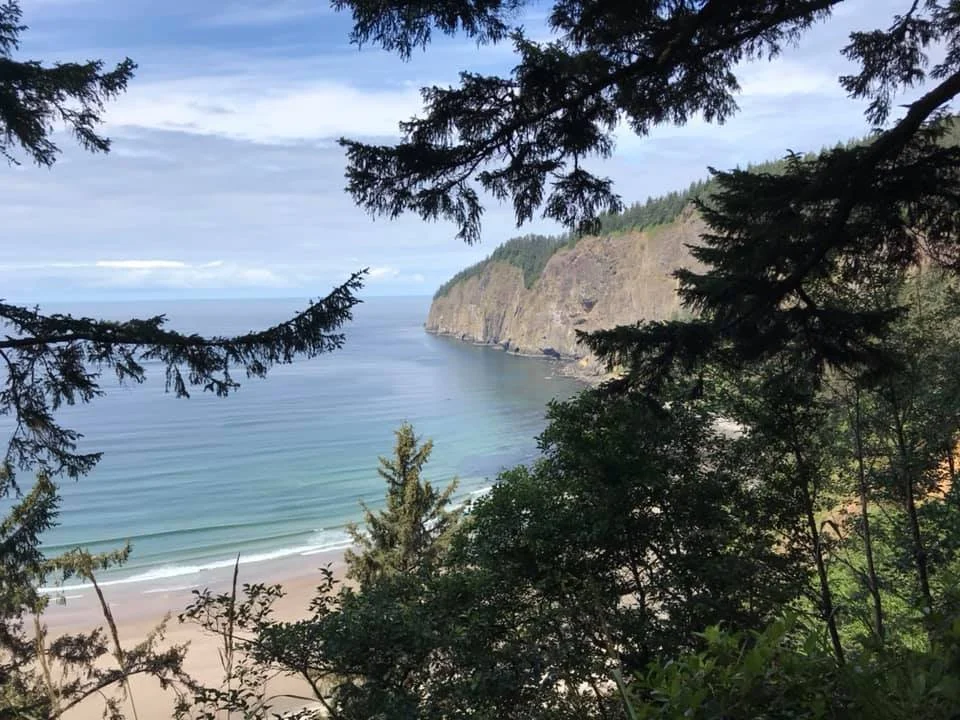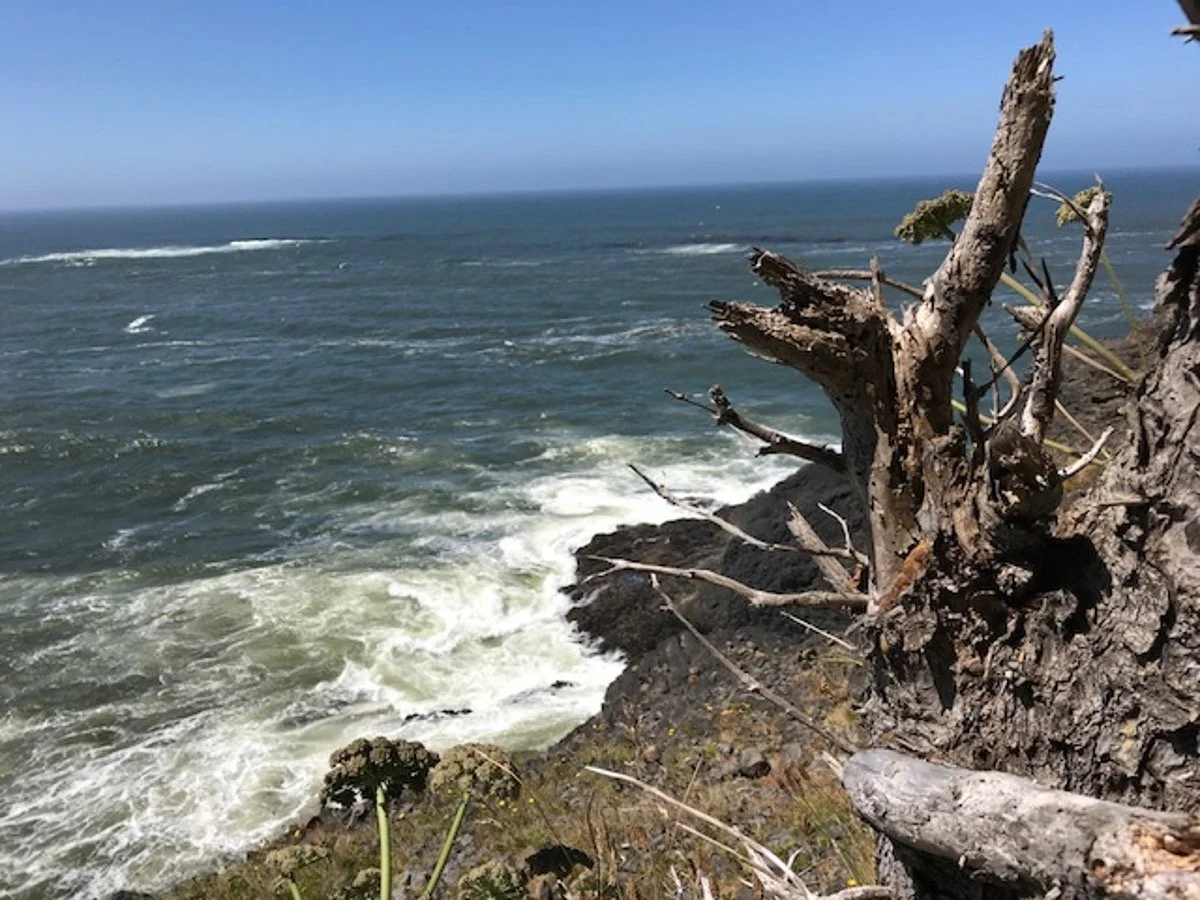Made it Through Round Two!
The Rocky Habitat Team is excited to announce that our proposals for Cape Lookout and Cape Foulweather have made it through Round 2!
ASLC Rocky Habitat proposals are moving forward
The Ocean Policy Advisory Council’s (OPAC’s) Rocky Habitat Working Group met again on April 29th to listen to proposers’ responses to their questions from the “Round One” meeting back in February. Our Rocky Habitat Coordinator Kent Doughty provided an excellent presentation about our two proposals that addressed the Working Group’s concerns, and the good news is that both our proposals are moving on to the next steps toward potential approval. The Rocky Habitat team is feeling incredibly pumped that we’ve made it this far!
A quick reminder about our proposals… We are seeking to have two sites added to the Rocky Habitat Management Strategy inventory as Marine Conservation Areas (MCA). The Cape Foulweather proposal includes the coastline from Whale Cove to Otter Rock and extends out into the ocean to encompass the near-shore kelp beds. The Cape Lookout proposal includes the coastline that wraps around the headland from north to south. The MCA designation is designed to protect “relatively intact ecosystems with high ecological value.”
This process is a first-of-its-kind in the state of Oregon – never before has the public been invited to propose areas for protective designation. Not to toot our own horns, but we have made it through an incredibly complex proposal process that at times felt truly overwhelming. It required careful delineation of habitat, development of rational, extensive communication and stakeholder outreach, and frankly, thousands and thousands of hours of work. Our two proposals were each 70-plus page documents heavy with technical language and detailed scientific documentation. As part of the process, our Audubon chapter also had to commit to taking a lead in ongoing stewardship and educational outreach.
Twelve different proposals were submitted by various community groups. Of those, two are now officially "recommended" by the Working Group for approval. Six, including our two, have received a “continuing consultation” designation, which means that they have merit but need additional discussion. The remaining four proposals will not be recommended to OPAC.
Whether or not our proposals are eventually accepted, this has been a tremendous growth experience for our Audubon chapter. We have learned that we can take on a very significant project and knock it out of the park; we have made a lot of new connections, and even friends, through our extended outreach; we have raised our chapter’s visibility with numerous regional and state organizations and agencies; and we have gained a tremendous amount of institutional knowledge along the way.
We want to thank all our members, constituents, and boosters who have encouraged us during this process. We still have work to do! If you are willing to provide public comment to OPAC, go to oregonocean.info to register. Your stories -- why you love Cape Lookout or Cape Foulweather and/or why you support our efforts to have them designated -- are critical to moving our proposals forward.
Talking with members about rocky habitat
The Greater the Effort, the Sweeter the Reward...
Progress report on our two Rocky Habitat proposals for Cape Lookout and Cape Foulweather.
The lock-down put a significant crimp in our bird watching activities during 2020, and we all pined for our wonderful outings, classes and activities like the Christmas Bird Count. But even as those activities were curtailed, as a chapter we used the “down time” to focus on developing two comprehensive Rocky Habitat proposals designed to increase protections for Oregon’s rocky shores, including headlands, tide pools, reefs, underwater kelp forests and offshore rocks and islands.
But as Willie Nelson sang, “nobody said it was going to be easy.”
We were dealt a blow at the first meeting of the Ocean Policy Advisory Council’s (OPAC’s) Rocky Habitat Working Group on Feb. 25, during which neither of our proposals — one for Cape Foulweather and one for Cape Lookout — was recommended for advancement to the next step in the evaluation process. This was despite previous high praise from agency and working group personnel. And we were in good company; of the twelve (12) proposals presented by various communities and organizations along the coast, seven (7) were denied an initial recommendation.
While the members of our rocky habitat committee were disappointed, we quickly recalled that this is just the initial review, and that our proposals still have a very good chance of being accepted; but we have more work to do. The Working Group’s concerns are based on needing more information and clarity, not on fundamental flaws.
So what are the next steps? We’re taking action in two ways: 1) preparing written responses to the issues raised by the working group, and 2) undertaking a public awareness campaign.
We are publishing two stunning videos to showcase the proposal areas, launching a public petition, running ads in the Oregon Coast Today, sending flyers to every single one of our members, posting on our Facebook pages and writing letters to the editors of our local newspapers. You can also write your own letters to the editor, help stuff envelopes, share our social media posts, talk to your friends and neighbors, and sign our petition, or send your comments directly to the Working Group.
In April, the Working Group will reconvene to consider public input, including our responses to their technical concerns and all public comments.
Public comments and support are essential to shaping the final recommendations that go to OPAC.
We are truly confident that everyone’s hard work will pay off, and we appreciate your support!
Protecting Our Rocky Shores - The Oregon Coast Rocks!
Oregon's Rocky Habitat Management Strategy is being updated for the first time since 1994! Learn about our proposals to protect Cape Lookout and Cape Foulweather.
ROCKY HABITATS
Make up about 41% of our Oregon coastline. State and federal policies, strategies, and rules have long been in place to manage and protect coastal habitats.
One of these strategies, Oregon's Rocky Habitat Management Strategy, is being updated for the first time since 1994. Many protected sites were re-approved, but some were not, and there are many others with little to no protection in place.
FOR THE FIRST TIME
Communities and individuals can submit proposals to protect some of Oregon's most iconic places on our rocky coastline under newly adopted protective designations, which are:
Marine Conservation Area (MCA)
Marine Education Area (MEA), also known as Marine Gardens
Marine Research Area (MRA)
AFTER LOOKING
At several important locations in Lincoln and Tillamook counties, we have decided to propose the following two sites, one in Lincoln County and one in Tillamook County. Click on the photos below to read more about these two unique rocky habitats.
BY WORKING TOGETHER
To propose new protective designations, we can create more awareness of rocky habitats, support important research to better understand our changing ocean, and keep these amazing areas safe while providing equitable public access. Together we can ensure that Oregon’s amazing coast continues to inspire future generations.
Cape Foulweather: not a foul view - Halle Ren
Learn more about Cape Foulweather in this beautiful essay written by board member Halle Ren.
Just south of Depoe Bay, Cape Foulweather rises 500 feet above the ocean, creating fantastic views of the Central Oregon coast. It is given the moniker “where Oregon began” as it is the first land formation seen by Captain Cook on that fateful voyage in 1778. While it was named for the terrible weather conditions Cook encountered here, this basalt headland is a true gem of Oregon’s natural beauty. Standing at the viewpoint on a calm and sunny summer day, you are more than likely to have unbeatable views of Gray whales cavorting and feeding in the abundant kelp beds below.
Looking south from the cape viewpoint you are treated to a stunning view of the famous Devil’s Punchbowl and the craggy beaches of Otter Rock. The Punchbowl is a spectacular and imposing cave that is inundated with water during high tide. During these tide events, the bowl churns and roils the ocean water angrily, creating fascinating and awe-inspiring viewing. Gulls and Cormorants are commonly seen as they move to and from Gull Rock in the distance.
On the other side lies a one-way road that winds its way up the north side of the cape. The Otter Crest Loop Road begins near Rocky Creek and Rodea Point and gives one spectacular view after another.
The road up offers a nice respite from the traffic of Highway 101. Whether biking or driving, take in the ancient and dramatic forest scenery and enjoy those clifftop views.








